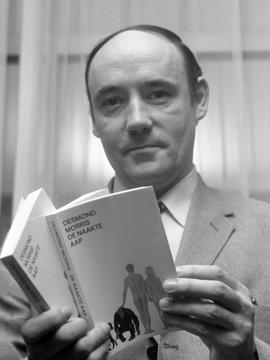Curator Veterinarian at Whipsnade
John James Yealland was a British aviculturist and ornithologist. He helped Sir Peter Scott found the Wildfowl Trust at Slimbridge, Gloucestershire. He accompanied Gerald Durrell on his first animal collecting expedition to the British Cameroon in 1947-1948. He was Curator of Birds at London Zoo
Louis Fraser was a British zoologist and collector. Fraser had worked as an assistant in the Indian Museum at Calcutta around 1888. He worked for fourteen years at the museum of the Zoological Society of London. He worked with the anatomist Richard Owen on studies of the emu and rhea. He participated in the Niger expedition of 1841 as the African Civilisation Society's scientist. Upon his return he became in charge of Lord Derby's collection at Knowsley Hall. In 1846 he was sent by Lord Derby to collect in north Africa. In 1848 he became conservator at Knowsley Hall. He wrote Zoologica Typica, or figures of the new and rare animals and birds in the collection of the Zoological Society of London, published in 1849. In 1850, Fraser was appointed Consul of Quidah, Dahomey (now Benin), West Africa. Around 1857-1859 he collected birds and mammals in Ecuador for Philip Lutley Sclater of the Zoological Society of London, and the year after in California. Upon his return to London, he opened a shop in Regent's Park, London, selling exotic birds. The last years of his life he spent in America. Fraser wrote a Catalogue of the Knowsley Collections (1850) and described several new species including the Derbyan parakeet Psittacula derbiana named after his employer.[2] A number of species and subspecies have been named in his honour, including Fraser's anole (Anolis fraseri ), Fraser's ground snake (Liophis epinephelus fraseri ), a centipede snake (Tantilla fraseri ),[5] Fraser's eagle-owl (Bubo poensis), Fraser's warbler (Myiothlypis fraseri ),[6] and Fraser's musk shrew (Crocidura poensis)
Harold Maxwell-Lefroy was an English entomologist. He served as a Professor of Entomology at Imperial College London and as the second Imperial Entomologist to India. He left India after the death of two of his children from insect-borne diseases. He worked on applied entomology and initiated experiments on the use of chemicals to control insects. A formula he developed was utilised to save Westminster Hall from destruction by wood-boring beetles, while others were used to control lice in the trenches during the First World War. The success of his chemicals led to increased demand and the founding of Rentokil, a company for insecticide production. Maxwell-Lefroy's students included Evelyn Cheesman who took up a position at the insect house in London Zoo from 1919. He was killed while experimenting on fumigants to control insects.
Curator of the Aquarium, Invertebrates and Reptiles
Museum Curator of the War Utility Exhibition
Assistant Curator of Insects at ZSL London Zoo
Desmond John Morris is an English zoologist, ethologist and surrealist painter, as well as an author in human sociobiology. He is known for his 1967 book 'The Naked Ape' and for his television programmes such as 'Zoo TIme'.
Morris was born in Purton, Wiltshire, to Marjorie (nee Hunt) and children's fiction author Harry Morris. He was educated at Dauntsey's School, Wiltshire. In 1946 he joined the British Army for two years of national service, becoming a lecturer in fine arts at the Chiseldon Army College in Wiltshire. After being demobilised he studied zoology at the University of Birmingham. In 1951 he began a doctorate at the Department of Zoology, University of Oxford, in animal behaviour. In 1954 he earned a Doctor of Philosophy for his work on the reproductive behaviour of the ten-spined stickleback.
In 1956 he moved to London as Head of the Granada TV and Film Unit for the Zoological Society of London, and studies the picture-making abilities of apes. The work included creating programmes for film and television on animal behaviour and other zoology topics. He hosted Granada TV's weekly 'Zoo Time' programme until 1959, and 'Life in the Animal World' for BBC2. In 1957 he organised an exhibition at the Institute of Contemporary Arts in London, showing paintings and drawings composed by common chimpanzees. In 1958 he co-organised an exhibition, 'The Lost Image', which compared pictures by infants, human adults and apes, at the Royal Festival Hall, London. In 1959 he left 'Zoo Time' to become the Zoological Society of London's Curator of Mammals. In 1964 he delivered the Royal Institution Christmas Lecture on Animal Behaviour. In 1967 he spent a year as Executive Director of the London Institute of Contemporary Arts.
Morris's books include 'The Naked Ape: A Zoologist's Study of the Human Animal' (1967). Morris moved to Malta in 1968 to write a sequel and other books. In 1973 he returned to Oxford to work for the ethologist Niko Tinbergen. From 1973 to 1981, Morris was a Research Fellow at Wolfson College, Oxford. In 1979 he undertook a television series for Thames TV, 'The Human Race', followed in 1982 by 'Man Watching in Japan, The Animals Road Show' in 1986 and then several other series. National Life Stories conducted an oral history interview (C1672/16) with Morris in 2015 for its Science and Religion collection held by the British Library.
Collector and Curator of Mammals and Birds at ZSL London Zoo from 1945 until his resignation in 1952
Curator of Reptiles, Anatomist and Researcher at ZSL London Zoo

